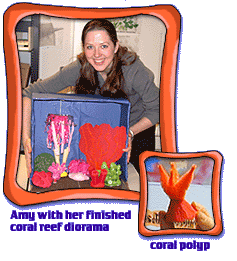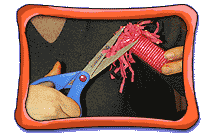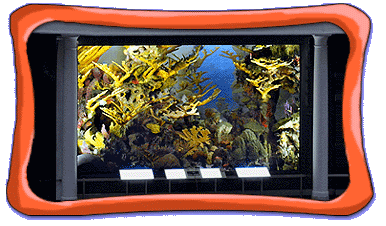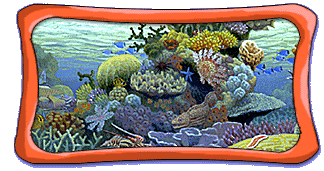

Hi, I'm Amy O'Donnell, an educator at the American Museum of Natural History. I am fascinated by coral reefs and the creatures that live near them.
Did you know that giant coral reefs are built by thousands of tiny organisms called coral polyps (pah-lips)? The outside layer of a reef is alive. A coral polyp produces a cup-shaped skeleton around itself. The inside layers of a reef are made of the skeletons of dead coral, some of which lived millions of years ago.
Today, I'm going to show you how to make a model of a coral reef called a diorama, a 3-D scene set against a painted background. Dioramas come in many sizes. Like Museum scientists and artists, I love to make scientific models of different kinds of organisms from interesting materials in my classroom. I use these models to help people understand how these creatures live and their amazing body forms.
What's a Museum Diorama?
Cool Coral Facts
Image Credits:
Photos: Brain coral: courtesy of ReefNews, Jonathan Dowell; Fan coral: courtesy of Paul Janosi; Sea anemone: courtesy of California Academy of Sciences; Sponges: courtesy of REVEL Project, University of Washington; Andros Coral Reef: courtesy of AMNH, Denis Finnin; Supplies, What to Do (all photos); Amy's Extras (all photos): courtesy of AMNH; Illustrations: Sean Murtha




 Biodiversity
Biodiversity
 Brain
Brain
 Genetics
Genetics
 Marine BiOLogy
Marine BiOLogy
 MicrobiOLogy
MicrobiOLogy
 PaleontOLogy
PaleontOLogy
 ZoOLogy
ZoOLogy
 AnthropOLogy
AnthropOLogy
 ArchaeOLogy
ArchaeOLogy
 Astronomy
Astronomy
 Climate Change
Climate Change
 Earth
Earth
 Physics
Physics
 Water
Water




